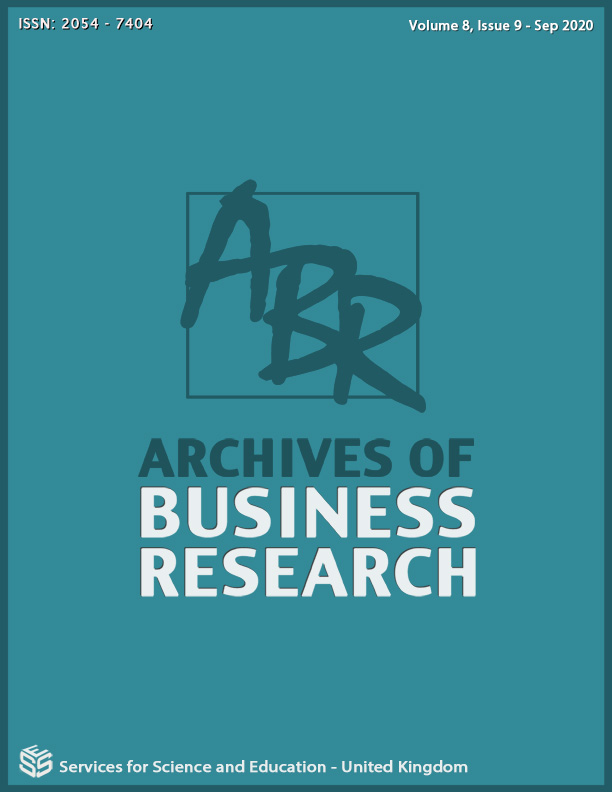Facilities and Materials for Teaching Sewing in Junior High Schools in Selected Schools in Ghana
DOI:
https://doi.org/10.14738/abr.89.9058Keywords:
Sewing, Junior High School, Instructional facilities, Instructional Materials, Availability, Non-Availability.Abstract
The study explored the views of Junior High School teachers in an urban area in Ghana on instructional facilities and materials for teaching Sewing. Descriptive survey design was used to conduct the study and the objectives were to find out the instructional facilities and materials available and not available for teaching Sewing. Through purposive, cluster and systematic random sampling procedures, 78 teachers were sampled to participate in the study. Questionnaire and observation checklist were used to collect data. The data were analysed with SPSS to generate frequencies and percentage table. The results show that classrooms, basic tools such as needles, dress maker’s pins, pin cushion, scissors, tape measure, brown paper and BDT textbook were available. However, sewing machines, thimbles, seam rippers, fabrics, threads and cupboards/chest of drawers were not available in the schools to facilitate effective teaching and learning. For improvement, all stakeholders in education should help with the provision of teaching and learning resources for Sewing.
References
Adamtey, S. K. (2008). Foundation to textiles and clothing: A career guide in fashion studies. Accra: Salt ‘N’ Light Publications
Akomolafe, O. C., & A desua, V. O. (2 016). The impact t of physical facilities on students’ level of motivation and academic performance in Senior Secondary Schools in South West Nigeria. Journal of Education and Practice. 7(4), 38 -42
.Akyeampong, A. K. (2002). Vocationalisation of secondary education in Ghana. Paper prepared for the Regional Vocatioal skills Development Review, Africa Region Washington, DC: World Bank.
Amedome, S. K., & Fiagbe, A. K. (2013). Challenges facing technical and vocational education in Ghana.
International Journal of Scientific and Technology, 2(6), 1-10.
Ameleke, G. (2015). Teachers' views about the teaching of clothing and textiles in senior high schools in the Southern Volta Region, Ghana. Unpublished dissertation, Department of Home Economics, University of Education, Winneba, Ghana.
Anamuah-Mensah, J. (2004). Vocational/Technical Education for Accelerated Wealth Creation: Critical Issues
Facing the Nation. Paper presented at the 56th New Year School Conference organised by the Institute of Adult
Education at the University of Ghana, 30th December, 2004.
Arkhurst, A. E. (2004). Evaluation of the implementation of the senior secondary school clothing and textile
curriculum in Ghana. Unpublished PhD Thesis, Nigeria, Nsukka.
Ashong, L. (2004). Introduction to sewing for junior secondary schools. Kumasi: Rainbow Publications.
Badmos, J.M., Agbeti, O. A., & Umeh, T.U. (2016). Instructional material: Level of use in
teaching and learning of economics in secondary schools. Journal of Research & Method in Education, 6 (4), 2320-2388.
Boateng, C. (2012). Restructuring vocational and technical education in Ghana: The role of leadership Development. International journal for Humanities and social Sciences, 2(4), 1-12.
Fleck, H. (1980). Towards better teaching of home economics (3rd ed.). New York: Macmillan Publishers.
Forster, P. (2014). Clothing & Textiles. Accra: Winmat Publishers Ltd.
Gavor, M., Ampong, I., &Tetteh-Cofie, D. (2014). Clothing & Textiles for Schools and Colleges.
Accra: Adwinsa Publication (Gh) Ltd.
Gavor, M. (2011). Flat pattern designing for women: An introduction. Accra: Adwinsa Publications (Gh) Ltd.
IFHE (2008). Home economics in the 21st Century position statement. Retrieved on July 22, 2015 from
http://www.ifhe.org/
Isola, O.M. (2010). Effect of standardized and improvised IM on student’s academic
achievement in secondary school physics. Unpublished M. Ed. dissertation. University of Ibadan, Ibadan, Nigeria.
King, K., & Palmer, R. (2007). Skills development and poverty reduction: A state of the art review. Torino: European Training Foudation.
Kochher, S. K. (2012). The teaching of social studies. New Delhi, India: Sterling
Publication Private Limited.
Kozulin, A., Gindis, B., Ageyev, V., & Miller, S. (2003). Vygotsky's educational theory in cultural context. New York: Cambridge University Press.
Lo, D. C. (2011). Pattern making. London: Laurence King Publishing.
McQuay, P. (2001). A discussion paper on vocational technical education in the United States of America. Retrieved
on August 2, 2015 from http://ccid.kirkwood.cc.ia.us/usvte0i.htm.
MOE (2007). Home Economics Textiles 8 to 12: Intergrated resource package 2007. British Columbia, Canada:
Victoria B.C.
MOE (2010). Teaching Syllabus for Clothing and Textiles (Senior High School 1-3). Accra: Curriculum Research and Development Division.
Moro, M. Y. (2000). Step by step sewing (A Handbook for Basic Schools). Kumasi:
Rainbow Publications.
Nyarko, E. K. (2011). Victory home economics (Basic Design and Technology). Accra: Curriculum Research and
Development Division of Ghana Education Service.
Oluwagbohunmi, M.F., & Abdu-Raheem, B.O. (2014). Sandwich undergraduate problem of
improvisation of IM in Social Studies. The case of Ekiti State University. Journal of International Academic Research for Multi or Plenary, 1 (12), 824 –833.
Osuala, E. C. (2004). Foudations of vocational education. Nsukka: Cheston Agency Limited.
Reader's Digest (2005). Complete guide to sewing. Plaeatville, NY: The Reader's Digest Association.
Sharma, A., & Naisele, E. (2008). TVET: The master key: The review of the functions of functions of FIT, TPAF and other TVET providers. Suva: Ministry of Education.
Smith, G., Peterat, L., & De Zwart, M. L. (2004). Home Economics now: Transformative practice, ecology and
everyday life. Vancourver, BC: Pacific Educational press.
Tashie, E. (2016). Enrolment of Clothing and Textiles students: A case study of senior high schools in the
Kwaebibirem District. Unpublished dissertation, Department of Home Economics, University of Education, Winneba, Ghana.
UNESCO (2008). Research overview: Teacher preparation and continuing professional development in Africa. Centre for international Education (CIE), University of Sussex. Retrieved on December 23, 2016 from http://www.sussex.ac.uk/cie/projects/completed/tpa/overview.
Zieman, N. (1991). Let’s sew! A beginner sewing guide. Beaver Dam, WI: Nancy’s Notions.






